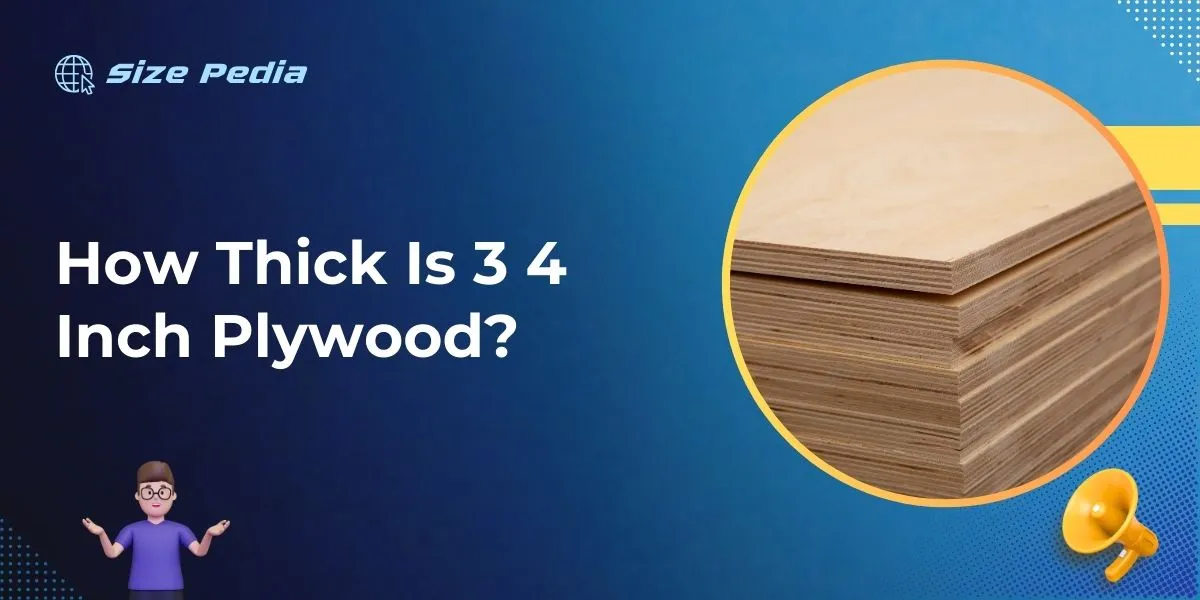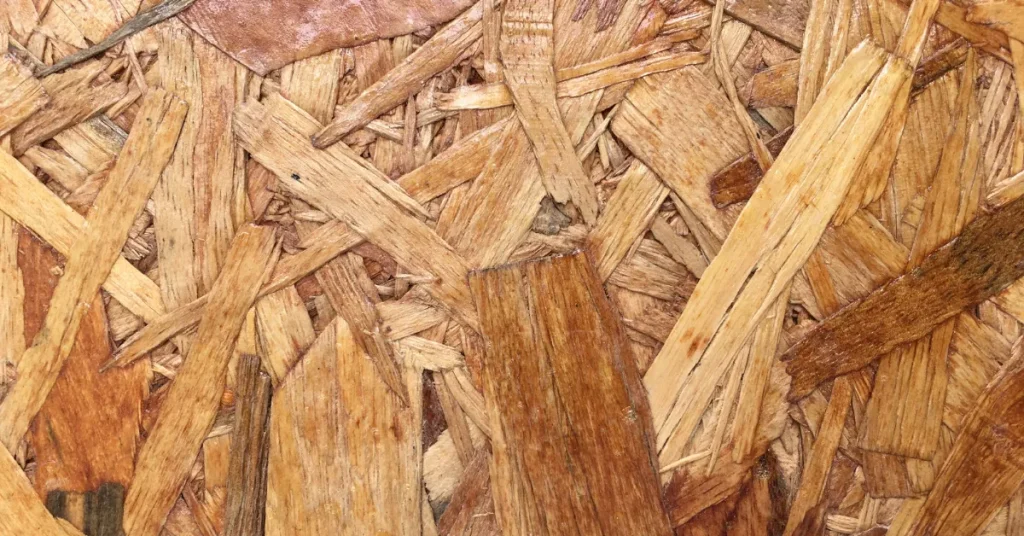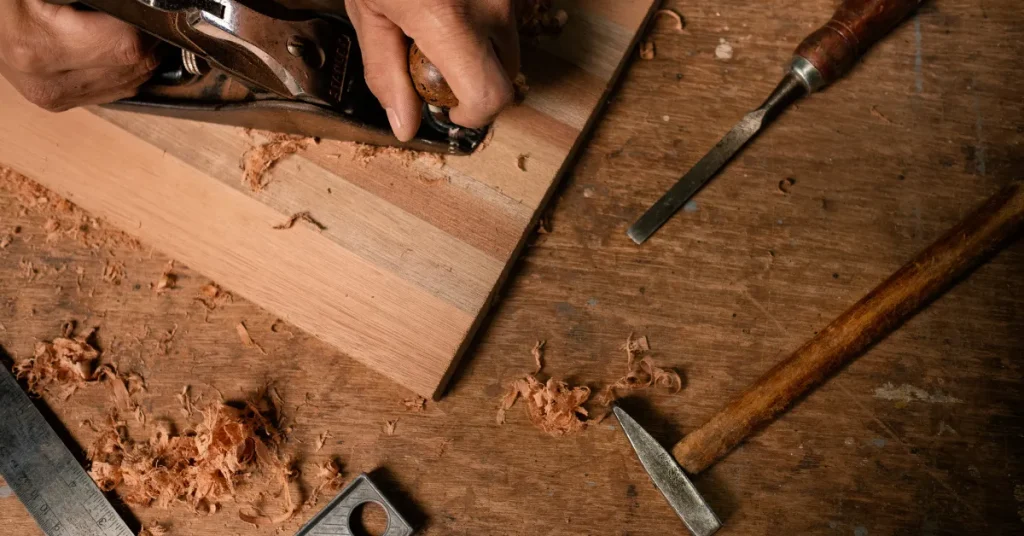3/4 inch plywood typically measures out to be 19 mm thick. This measurement can vary slightly based on manufacturing standards.
Plywood is a versatile and widely used engineered wood product composed of multiple layers of veneer, or plies, bonded together with glue.
Its thickness determination, such as 3/4 inch, is essential for builders, woodworkers, and DIY enthusiasts to ensure structural integrity and meet project requirements.
Plywood offers a balance of strength and flexibility, making it a popular choice for construction, furniture, and cabinetry.
Its layered construction provides resistance to cracking, shrinkage, and warping, which contributes to its durability and long-term performance.
When selecting plywood for a project, understanding the exact thickness is crucial for joins and fittings to ensure a finished product with a professional appearance and stable construction.

Essentials Of Plywood Measurement
The Essentials of Plywood Measurement are critical for both DIY enthusiasts and professional builders. Understanding the true thickness of plywood is key to project success.
Commonly, plywood is sold in nominal thicknesses, where 3/4 inch is a standard. However, the actual thickness can vary. Let’s dive into why this happens and how to make precise comparisons with metric measurements.
Thickness Variance In Plywood
Plywood thickness is not always uniform. A 3/4 inch plywood sheet may not measure exactly 0.75 inches. This variance comes from the manufacturing process.
During sanding, the sheets may lose a small amount of thickness. For precise projects, check the actual thickness with a caliper.
- Advertised Thickness: The label on the sheet
- Actual Thickness: Can be slightly less, often 1/32 inch to 1/8 inch under
Comparing 3/4 Inch To Metric Measurements
In some countries, plywood is measured in millimeters. Comparing 3/4 inch to metric means converting inches to millimeters. Here is a table that compares these measurements:
| Inches | Millimeters (mm) |
| 3/4″ | 19 mm |
Note that a 19 mm plywood sheet could still have a similar variance in thickness.
Structural Integrity And Applications
3/4 inch plywood is a popular choice in construction.
It combines durability with versatility.
Understanding its strength and ideal use cases is key for any project.
This section explores structural integrity and applications of 3/4 inch plywood.
Weight-bearing Capacity
Plywood is known for its robust weight-bearing capacity.
3/4 inch plywood can support significant weight.
This thickness is often used in areas requiring sturdy surfaces.
It ensures safety and longevity across various applications.
Typical Uses Of 3/4 Inch Plywood
- Flooring: It stands up to heavy furniture.
- Cabinetry: The material resists warping under weight.
- Countertops: It’s a solid base for typical kitchen use.
- Roofing: 3/4 inch plywood adds structural stability.
- Furniture: Its strength makes durable tables and desks.
Manufacturing Process And Tolerances
Understanding how 3/4 inch plywood achieves its thickness requires insights into manufacturing processes and tolerances. These elements are crucial for buyers and builders needing specific measurements.
How Plywood Is Made

Plywood starts with thin wood layers, called veneers. Veneers come from peeling logs. Logs rotate against a blade. This process creates continuous sheets. Sheets are then dried and sorted. Adhesive bonds the veneers.
Cross-graining adds strength. Pressure and heat create the final product. This method ensures strength and durability.
Industrial Tolerances For Thickness
Thickness in plywood is not absolute. Variances, known as tolerances, are standard. Factors affecting tolerances include:
- Wood expansion from moisture
- Compression during pressing
- Milling accuracy and equipment
The industry sets standard tolerances. These standards ensure safety and reliability. For 3/4 inch plywood, tolerances are usually plus or minus 0.05 inches. This means actual thickness may slightly vary.
| Labelled Thickness | Actual Thickness Range |
| 3/4″ | 0.70″ – 0.80″ |
Users rely on this range. They plan knowing actual measurements may vary. Consistency is vital, yet slight variations occur. Choosing quality plywood ensures you stay close to the mark.
Plywood Grades And Quality
Plywood is a versatile building material. Its quality matters in every project. The standard thickness for plywood is 3/4 inch. But the true thickness can vary. This is due to the different grades and quality standards plywood comes in. Let’s dig into how these factors affect the plywood’s dimensions and strength.
Impact On Thickness And Strength
The grade of plywood tells about its quality and durability. Plywood with fewer defects has higher grades. This means more strength and consistent thickness.
- Higher Grade: Stronger and more uniform.
- Lower Grade: May have knots or voids, affecting thickness.
Thickness is not just a number. It adds to the plywood’s ability to bear weight. A 3/4 inch plywood labeled AA will likely be thicker. It will be stronger than a C-D grade sheet. This is important to know for your project needs.
Selecting The Right Grade For Projects
Choosing the right grade is key for project success. Each project has its own needs. You should match those needs with the right plywood quality.
| Grade | Best Use |
| A | Fine furniture |
| B | Interior walls |
| C-D | Subfloors |
For cabinets, go with Grade A for a smooth finish. For subfloors, Grade C-D is fine. It can handle being hidden under carpets or flooring. Exterior projects need plywood labeled “Exterior”.
Practical Tips For Woodworking

Practical Tips for Woodworking cover essential skills and knowledge that every woodworker should have. Accurate measuring and cutting are crucial. So is understanding the true thickness of materials like 3/4-inch plywood.
Let’s dive into practical ways you can improve accuracy and account for variability, making your woodworking projects successful and satisfying.
Measuring And Cutting For Accuracy
Accurate measurements and cuts are the backbone of any woodworking project. They ensure all your pieces fit together perfectly. Follow these steps:
- Use a reliable tape measure or ruler.
- Mark your cut lines with precision.
- Support the plywood properly during cutting.
Always double-check measurements before making cuts. This prevents wasting materials and time.
Compensating For Thickness Variability
Despite its name, 3/4-inch plywood often isn’t exactly 3/4 inches thick. The actual thickness can vary. Here’s what to do:
- Measure the plywood with calipers for exact thickness.
- Adjust your plans to reflect the real thickness.
- Test cuts on scrap pieces can save your project.
This approach helps to ensure pieces that are supposed to be snug fit as they should.
Common Misconceptions Cleared Up
When talking about plywood, the thickness is a hot topic. It seems straightforward, but it’s not always what it seems. Let’s clear up some common myths.
3/4 Inch Plywood Myths
The number “3/4 inch” might make you think that the plywood you buy will be exactly that thick.
This is not always true. Many think that all plywood labeled “3/4 inch” is the same. This idea is far from reality. Knowing the truth can save time and money.
- Myth: All 3/4 inch plywood is 3/4 inch thick.
- Fact: Actual thickness can be slightly less.
- Myth: Plywood thickness does not vary.
- Fact: It varies by type and manufacturer.
Realities Of Plywood Sizing
Plywood sizing can be confusing. The labeled size and the actual size often differ. This is important for precise projects. Let’s set the record straight.
| Labeled Size | Actual Thickness |
| 3/4 inch | Approx. 18-19mm |
Different standards and measures are in play. A thickness of 18-19mm is common. Always measure before starting a project. This ensures that the plywood fits perfectly.
Always ask for a sample or check the label closely. Double-check the thickness with a caliper. This way, there will be no surprises during your project.
FAQs About How Thick Is 3 4 Inch Plywood
What Is The Actual Thickness Of 3 4 Plywood In Inches?
The actual thickness of 3/4-inch plywood typically measures slightly less, around 23/32 inches.
What Is The Actual Thickness Of Plywood?
Plywood thickness varies, typically ranging from 1/8 inch (3mm) to 1 1/4 inches (32mm). Common sizes include 1/4″, 1/2″, and 3/4″ sheets.
Is 3 4 And 23 32 The Same?
No, 3/4 and 23/32 are not the same. 3/4 is equivalent to 24/32, so 23/32 is slightly less than 3/4.
What Is Another Measurement For 3 4 Plywood?
Another measurement for 3/4 inch plywood is 19 millimeters (mm) thick. This is the metric equivalent used internationally.
Conclusion
Understanding the thickness of 3/4 inch plywood is essential for any woodworking project. This precise measurement ensures your constructions are strong and durable.
Let’s embrace the reliability of 3/4 inch plywood for our creative endeavors, knowing its exact thickness can elevate our craftsmanship.
Always measure twice, cut once, and build with confidence.
Resources:
1. https://basc.pnnl.gov/resource-guides/structural-sheathing-plywoodosb-exterior-walls
